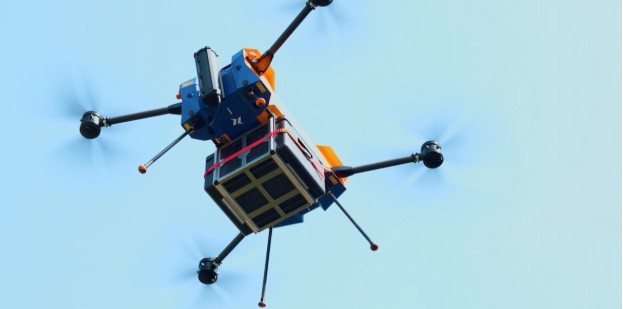How HHLA Sky Drones Are Revolutionizing Healthcare Logistics: Faster Diagnostics, Lower Costs, Smarter Operations

As hospitals and laboratories strive to deliver timely diagnostics and treatments, a new force is taking flight — HHLA Sky drones. Once viewed as futuristic gadgets, drones have rapidly become indispensable tools in the logistics chain, dramatically reducing costs and transport times while enhancing the reliability of critical medical deliveries.
The Cost and Time Revolution
Compared to traditional ground-based transport, drones are proving to be game changers. In healthcare logistics, they are cutting delivery costs per mile and slashing transportation times by up to 70%. This acceleration has a direct and profound impact on patient care — enabling laboratories to analyze samples faster, doctors to receive results sooner, and patients to start treatments earlier.
Traditional courier vehicles face constant challenges: traffic congestion, limited routes, rising fuel prices, and labor shortages. Drones, by contrast, fly over bottlenecks and deliver medical goods directly, with minimal environmental impact. Every minute saved in diagnostics translates into better patient outcomes, and every cost reduced helps make healthcare systems more sustainable.
Automation Meets Healthcare Efficiency
The integration of drones into logistics networks represents more than just faster delivery — it’s the dawn of automated healthcare logistics. Drones introduce an entirely new, autonomous delivery channel that functions alongside existing ground networks. They can operate continuously, unaffected by traffic or driver fatigue, and they integrate seamlessly into digital supply chains through cloud-based control platforms.
Automation also means reliability. With sophisticated flight planning and monitoring systems, drones can ensure consistent delivery schedules, secure handling of medical samples, and full traceability of every shipment. This allows hospitals and laboratories to plan workflows with greater precision — and frees up valuable human resources to focus on what matters most: patient care.
A German Example: Morpheus Logistik GmbH and Eurofins GeLaMed
Germany is emerging as one of the leaders in adopting drone-based healthcare logistics. A standout example is Morpheus Logistik GmbH, which operates automated drone corridors between hospitals and Eurofins GeLaMed laboratories. These drone routes are managed via the HHLA Sky Open Integrated Control Center (ICC) — a technology platform that ensures safe, compliant, and coordinated drone operations across multiple locations.
The ICC acts as a digital nervous system for automated logistics. It provides real-time visibility, safety assurance, and regulatory compliance for simultaneous operations. By enabling coordinated drone flights between hospitals and labs, Morpheus Logistik ensures that diagnostic samples reach testing facilities swiftly and securely.
The benefits are tangible:
- Faster diagnostics lead to earlier treatment decisions.
- Lower costs per mile make healthcare logistics more sustainable.
- Smarter operations reduce administrative and operational burdens.
Together, these advancements redefine how healthcare providers think about logistics — transforming it from a back-office necessity into a strategic enabler of better care.
Scalability and the Future of Medical Drone Logistics
What makes this development particularly exciting is scalability. Drone corridors can be rapidly expanded to new routes, connecting more hospitals, clinics, and laboratories in a regional or national network.
As healthcare organizations increasingly face the dual pressures of budget constraints and rising patient expectations, scalable drone logistics present a unique opportunity. By integrating automated air transport into their supply chains, they can achieve the “triple win”:
- Improved service quality through faster diagnostics.
- Reduced operational costs and emissions.
- Enhanced resilience against ground transport disruptions.
Moreover, the regulatory framework in Europe — especially in Germany — is evolving to support such innovations, paving the way for wider adoption of drone logistics in healthcare, pharmaceuticals, and even emergency response.
Towards Smarter Healthcare Systems
The introduction of automated drone logistics isn’t just a technological shift — it’s a step toward smarter, more responsive healthcare systems. By combining automation, data integration, and sustainable transport, drones enable a new level of efficiency that aligns perfectly with the digital transformation goals of modern healthcare providers.
Hospitals that adopt drone logistics gain a competitive edge, not only by optimizing internal processes but also by positioning themselves as forward-looking, patient-centric organizations.
As Morpheus Logistik GmbH and Eurofins GeLaMed demonstrate, this transformation is no longer theoretical — it’s happening now. With the support of platforms like the HHLA Sky Open Integrated Control Center, healthcare logistics can be scaled seamlessly, ensuring safe, efficient, and compliant drone operations across multiple sites.
Faster diagnostics. Lower costs. Smarter healthcare logistics.
The future of medical delivery is in the air — and it’s ready to scale.






